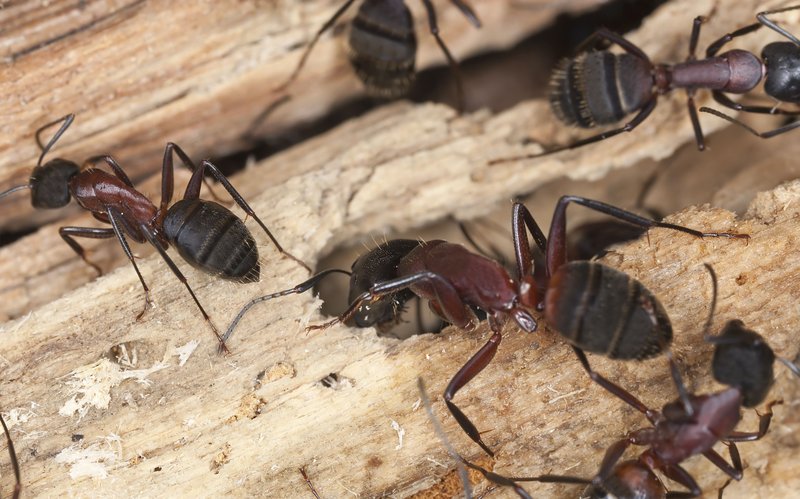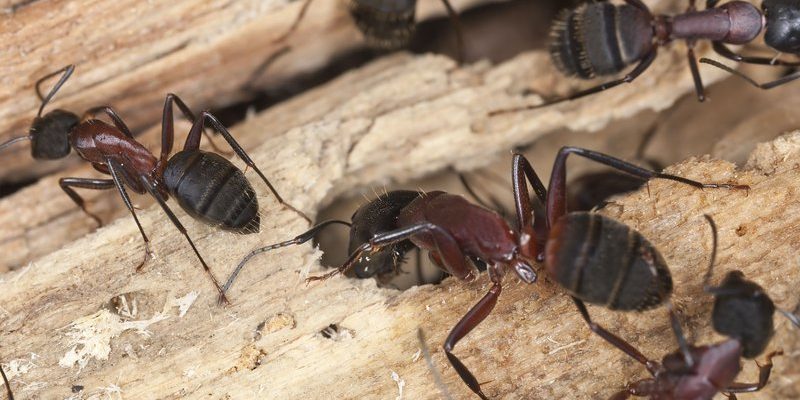
Carpenter ants are not just any ant; they’re skilled builders. They thrive in various environments, from forests to urban areas, adapting their living conditions to suit their needs. Just think of them as the ultimate woodworkers of the insect world, taking advantage of the spaces around them—whether that be a rotting tree, a fallen log, or even the timber in your house. So, let’s dig deeper into their world and uncover where these ants like to call home and how they manage to thrive in such diverse environments.
Understanding Carpenter Ant Habitats
Carpenter ants are quite versatile when it comes to choosing their homes. They can be found in a range of habitats, from forests to urban settings. Typically, they prefer wood, but it might surprise you to know that they don’t just settle for any wood. These ants are particularly attracted to damp or decaying timber, as it’s easier for them to chew through.
In forested areas, carpenter ants often inhabit dead trees, fallen logs, or stumps. These structures provide them with both shelter and the means to create their nests. In urban environments, they can be found in homes, attics, and even in walls. You might wonder why they choose these places. Simply put, it’s a chance to find food sources while being sheltered from predators.
In addition to natural habitats, carpenter ants also adapt to thrive in human-made structures. Here, they often find easy access to food, including sugar, proteins, and fats. It’s like finding a restaurant right in their living space. So, if you ever spot them in your home, remember that they’re just looking for a cozy place with food nearby!
How Carpenter Ants Create Their Nests
Carpenter ants are known for their unique nesting behavior. Unlike many other ants, they don’t use soil but instead carve out galleries in wood. These galleries can be quite elaborate, with tunnels that can stretch for quite a distance. When they begin to nest, they usually select wood that is already damaged or decaying. This makes their job easier, as the wood is softer and easier to chew.
Let me explain how this works. Carpenter ants will use their strong mandibles to chew through the wood, essentially creating a multi-room “apartment complex” for their colony. They prefer wood that’s moist, as it’s easier to excavate. This preference is also why homeowners sometimes have issues; the ants can inadvertently damage wood structures in homes, leading to costly repairs.
Over time, these nests can grow quite large as the colony expands. A mature carpenter ant colony can contain thousands of ants, all working together to maintain the nest and foraging for food. It’s like a bustling little city within the walls or trees!
The Role of Moisture in Carpenter Ants’ Lives
Moisture plays a crucial role in the life of carpenter ants. As mentioned, they prefer wood that has some level of decay or moisture, often caused by water damage, leaks, or rot. This is not just a preference; it’s a necessity for their survival.
When wood is moist, it becomes softer and easier to chew, allowing carpenter ants to carve out those intricate nests we talked about. But it’s not just about the wood. Moist environments also provide them with access to the food sources they rely on. Carpenter ants are attracted to sugary substances found in damp areas, which can range from honeydew secreted by aphids to the sugars in rotten fruit.
As a result, if you have a moisture problem in your home, it’s not just an issue for you; it can create an inviting habitat for carpenter ants. Keeping an eye on moisture levels, fixing leaks, and ensuring proper ventilation can go a long way in keeping these pesky ants at bay.
Survival Strategies of Carpenter Ants
Carpenter ants have developed several survival strategies that help them thrive in different environments. One key strategy is their ability to adapt their foraging behavior based on available resources. When food is scarce, they’re not afraid to venture further from their nests. This can mean traveling longer distances in search of that sweet, sugary snack or protein source.
They also have a unique social structure within their colonies. Worker ants are responsible for foraging, while others take care of the queen and the brood (the developing young). This division of labor ensures that the colony remains healthy and can adapt to changing conditions. When faced with predators or threats, carpenter ants can communicate through pheromones, allowing them to work together to protect their nest.
On top of that, carpenter ants are quite resilient. If a nest becomes compromised—say, due to environmental conditions or predation—they can quickly regroup and find another suitable nesting site. It’s like being able to move your home on a whim, which is a pretty impressive survival tactic for such small creatures!
How Carpenter Ants Influence Their Ecosystem
Carpenter ants may be tiny, but they play a significant role in their ecosystems. By breaking down decaying wood, they contribute to nutrient cycling in forests. This process helps enrich the soil, allowing plants to thrive, which in turn supports other wildlife.
Their nesting habits also create habitats for other species. When they excavate wood, they sometimes leave behind small holes that can be beneficial for birds or small mammals looking for nesting sites. This interconnectedness illustrates just how important carpenter ants are, even when they seem like little nuisances in our homes.
Additionally, carpenter ants serve as a food source for various predators. Birds and other insects often feast on these ants, helping to maintain a balanced ecosystem. So, while you might view them as pests when they invade your space, in nature, they hold a vital position in the ecological web.
Understanding where carpenter ants live and how they adapt can change the way we view these fascinating creatures. They’re much more than just uninvited guests in our homes; they’re incredible architects that play a crucial role in their environments. By creating nests in wood and breaking down dead trees, they contribute to the health of ecosystems, making them valuable members of nature’s team.
If you find carpenter ants in your home, it’s essential to address the issue, especially if you notice signs of wood damage. However, remember that they are simply trying to survive. A little empathy can go a long way in how we manage their presence, both in our homes and in the natural world. So next time you see a carpenter ant, you might just see a determined little architect on a mission, adapting to the world around them!

